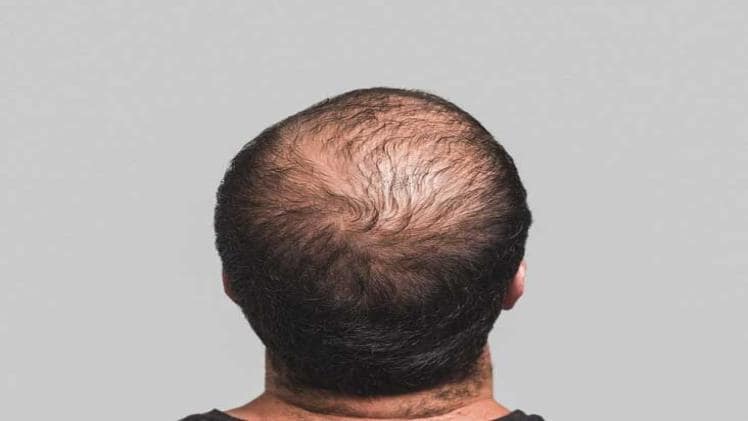Hair regrowth rate varies from person to person. But the question is how long does it take for hair to grow back? For example, blacks have slower hair growth than Caucasians. The average growth rate for Caucasian hair is 367 um per day, or 0.42 inches per month. In a study of hair growth rates in men and women from different ethnic groups, African Americans, Western Africans, and South Africans showed the slowest rates. By contrast, Asians had the fastest growth rates.
0.4 to 0.5 inches per month
Hair regrowth rate can vary from one person to another but the average rate is about 0.4 to 0.5 inches per month. This rate is determined by a number of factors such as gender, age, and the area of the body you are growing hair from. The rate can also vary according to hair color and ethnicity.
Hair regrowth rate is largely determined by your age, and male hair grows faster than female hair. Male hair goes through its hair cycle faster and does not grow as long before shedding. This means that it grows faster but also means that it needs to be cut and trimmed more frequently than female hair.
The rate of eyelash growth varies widely among different ethnic groups. You can ask how long does it take to grow eyelashes back. In one study, Asian eyelashes and hair grew at the fastest rate, 411 micrometers per day, resulting in 0.48 inches per month of growth. By contrast, African hair grew at a slower rate, averaging around 280 micrometers a day or 0.32 inches per month.
Genetics
Genetics plays a huge role in hair growth and health. Hair density, length, color, and texture are all affected by genes. In a recent study, researchers identified two genes that influence hair density in Asian people. Further, they identified specific genetic predictors of male pattern baldness. These findings are partially contrary to the results of earlier research.
Contact immunotherapy
Contact immunotherapy is a method of treatment for eczema. It involves applying a chemical to a small area of the scalp or arm. The solution remains on the skin for a few hours and then is washed off. It is then repeated several times over a period of several months. The treatment may cause an allergic reaction. If it is successful, hair regrowth can begin within three to four months.
The method of treatment has also been studied in patients with AA. While the response to contact immunotherapy cannot be predicted with 100 percent accuracy, a meta-analysis of the treatment results has demonstrated a high rate of hair regrowth in patients with AA. The researchers found that contact immunotherapy improved the regrowth rate in patients with patchy alopecia and in those with total and universal alopecia.
Anagen phase
Hair follicles go through different growth phases throughout the life of a human. The majority of hair follicles spend 90% of their time in the anagen phase, with a small percentage in the catagen or telogen phases. As we age, the percentage of follicles in the anagen phase decreases. Various medications and treatments are available to reverse hair loss and prevent further balding.
The hair growth rate depends on various factors such as genetics, diet, season, and dietary intake. For instance, hair growth is faster in Asian women than in African women and is slower in African men. Women do not differ in their hair growth rate based on ethnicity, but hair growth rates are generally faster in summer than in winter. Researchers attribute this difference to increased exposure to UV rays and dietary changes.
Telogen phase
The Telogen phase is the resting stage of the hair cycle. It lasts about 100 days for hair on the scalp. However, it’s longer for eyelashes, eyebrows, and arm and leg hairs. During this time, cell division ceases and the hair attaches itself weakly to the base of the follicle.
When the follicle reaches this stage, hair growth slows down. The remaining hair follicles are in the resting phase. This means that at any one time, only about 9% of hairs on the head are in the active growth phase. After three months, the hairs will enter the final shedding phase. However, it’s important to note that this is not the same as Telogen Effluvium, a condition where a traumatic event forces the hair to enter the Telogen phase prematurely. If this happens, it can lead to more hair loss than would otherwise be normal.
A biological clock is responsible for determining the timing of the hair growth phase. Several metabolic alterations, such as pregnancy, malnutrition, and stress, can affect the timing of the biological clock. In extreme cases, a large number of hair follicles may enter the telogen phase at one time.
Catagen phase
The Catagen phase of hair growth is characterized by the cessation of cell division in the matrix. The hair shaft rounds and retreats toward the skin surface, forming a club-like structure with loosely-organized cells. Hairs during this phase do not grow very long, and they rarely survive as forensic specimens.
Hair follicles divide rapidly during the anagen phase. At any one time, 3% of all hair follicles are in the anagen phase. The anagen phase typically lasts between two to eight years, but this is highly variable. When a hair follicle enters the catagen phase, an unknown signal causes the hair to stop growing. This results in the loss of new hair. Less than 1% of hairs are in the catagen phase at any given time.
The Catagen stage of hair growth is the transitional stage of the hair cycle, lasting two to three weeks. About 3% of hairs on the scalp are in this stage. During this time, the outer root sheath is attached to the root. After this period, the hair stops growing and forms a club-shaped strand. After the catagen phase, the hair enters the telogen phase, which is a period of rest.

